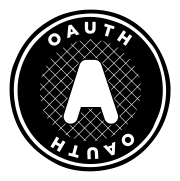“You're not a designer”
| Table of Contents | |
|---|---|
| I. | Proposal |
| II. | App |
| III. | Team Members |
| IV. | Tools |
| V. | File Tree |
| VI. | Contributions |
As budding web developers applying for jobs in the field, sometimes creating an initial portfolio site can be daunting, if not at the bottom of our list of things to do.
Project3 lets you build static portfolio sites quickly and with your information and data.
| Site Flow | Resume Flow |
|---|---|
 |
 |
 |
 |
 |
 |
 |
 |
- DevOps
- Front-end Development
- Back-end Development
- Back-end Development
React - app build
Node.js
Heroku - app deployment
MongoDB - to capture users, resources, interaction
Bootstrap 4 - HTML/CSS frameworks for app
Bootstrap 3.0.2 - Template formatting use
OAuth (GitHub) - login and administering of privileges
Electron - multi-platform usability (desktop or in-browser)
GitHub - repository for versioning and project cards
Google Drive - doc coordination and hosting
Slack Channel (private) - team communication
Draw io - mockups and wireframes for site, user flow, and database organization
{{ tree }}
GitHub Flow is a simple and effective branching strategy which the folks at GitHub use. Most teams actually do not need everything GitFlow gives them and are much better off with a simpler workflow.
GitHub Flow is in a nutshell:
- Update master to latest upstream code
- Create a feature branch
git checkout -b myFeatureBranch - Do the feature/work
- Push feature branch to origin
- Create pull request from origin/ -> upstream/master
- Review, fix raised comments, merge your PR or even better, get someone else to.
The main rule of GitHub Flow is that master should always be deployable. GitHub Flow allows and encourages continuous delivery.


.png)


